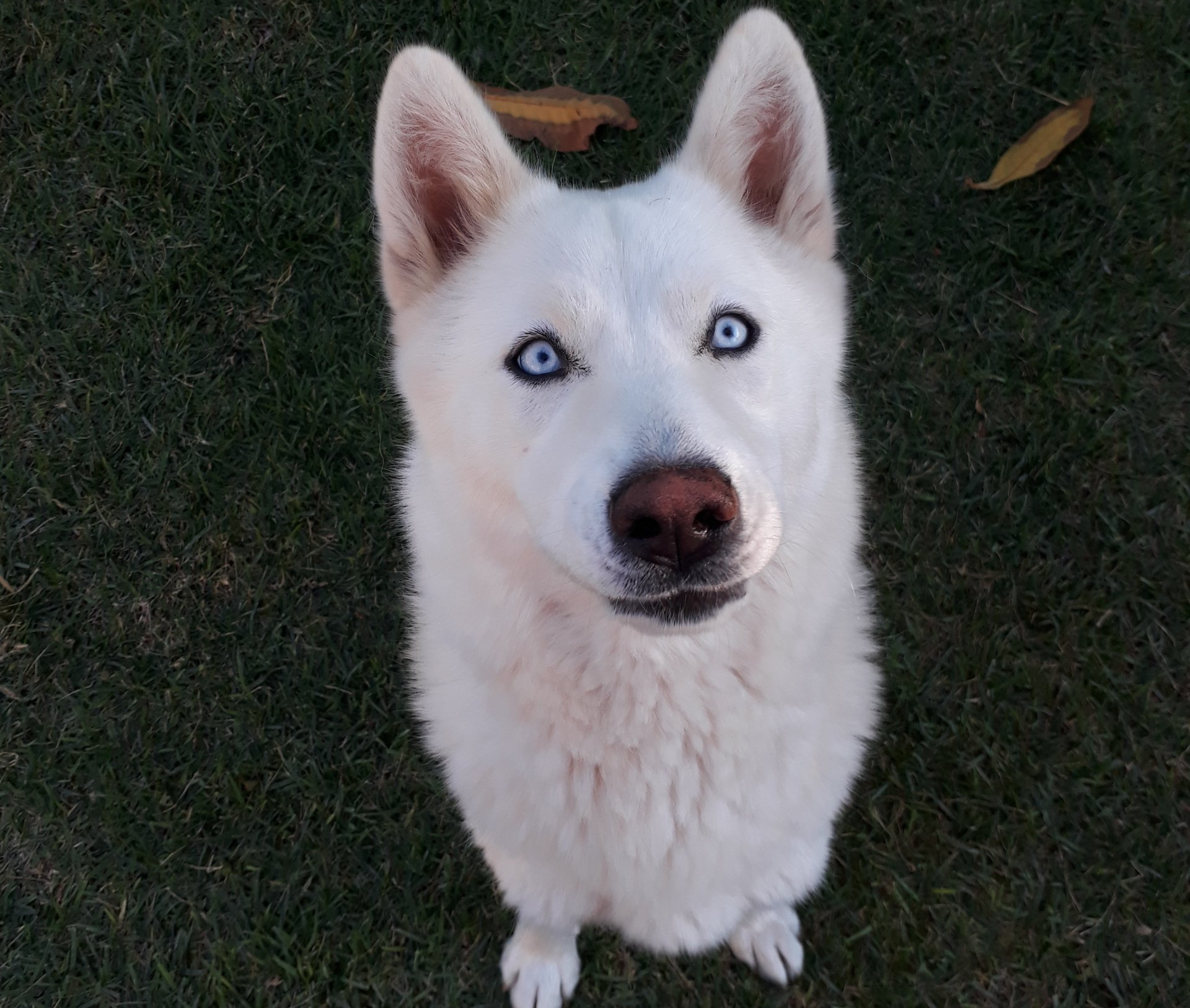Get in touch
555-555-5555
mymail@mailservice.com

Dry Eye in Dogs
Dogs can develop an ocular condition called keratoconjunctivitis sicca (KCS), which is also known as dry eye. This condition can lead to complications like pain and blindness but there are ways to prevent and manage it. Keep reading to learn what the symptoms are and how to treat it.
What is dry eye?
Normal dogs have 3 components to their tear films: an aqueous or watery part, a fatty part, and a mucoid part. Dogs with dry eye lack enough of the aqueous component of their tears. Without this part of the tear film, the surface of the eye becomes exposed and can dry out, leading to many secondary effects. With appropriate treatment and monitoring, dry eye can be successfully managed to avoid complications like pain and blindness.
What causes dry eye?
The most common cause of dry eye in dogs is a local, immune-mediated process. This means that the body’s own immune system attacks the cells that make watery tears so they are unable to make enough. There may be an inherited component to this cause of dry eye.
There are a number of other conditions that can lead to decreased tear production. For example, some hormonal diseases like diabetes, an underactive thyroid gland, or Cushing’s disease may cause dry eye. Canine distemper virus has been thought to cause dry eye. Certain medications have been implicated like oral sulfa antibiotics or topical ocular atropine. There is a form of dry eye called neurogenic keratoconjunctivitis sicca, which happens when there is damage to certain nerves. This nerve damage can be caused by an inner ear infection, trauma, cancer, or can be idiopathic, which means we cannot find a cause.
Are certain breeds predisposed to developing dry eye?
Since the most common form of KCS is immune-mediated and thought to have a genetic component, there are certain breeds for which it is more common. For example, English bulldogs, shih tzus, pugs, West Highland white terriers, Lhasa apsos, Cavalier King Charles spaniels, American cocker spaniels, and Pekingese are some predisposed breeds.

What are signs of dry eye?
KCS tends to be a chronic disease and may have waxing and waning signs initially. Usually both eyes are affected. Some dogs may be treated on and off with topical antibiotics or steroids, which often only help temporarily.
Early in the disease process, you may notice redness and thickening of the conjunctiva, which is the pink, squishy material around the eye. Your dog may squint or hold the eye shut. Because KCS is defined by a lack of the watery part of tears, the fatty and mucoid parts remain, so there is often stringy, yellow to green discharge. Your dog may develop a corneal ulcer or scratch on the surface of their eye.
If the disease is not treated properly, the surface of the eye continues to dry out. The eye itself can eventually develop a dull and lackluster appearance. Dryness can also lead to recurrent corneal ulcers. Over time, chronic exposure can cause changes like superficial neovascularization, which is characterized by tiny, branching blood vessels across the eye surface. Another chronic change is pigmentary keratitis, which is when the surface of the eye turns black. This pigment can become extensive enough to result in reduced vision or even blindness.
How is dry eye diagnosed?
Your veterinarian will start with a thorough ocular examination and a couple of tests. The Schirmer tear test is used to diagnose dry and and is performed by placing a small strip of special absorbent paper placed between the eye and lower eyelid to see how many tears your dog makes over the course of 1 minute. There are millimeter markers on the paper to quantify tear production. A normal dog should make at least 15 millimeters of tears per minute.
Your veterinarian may also check for evidence of a corneal ulcer with an eye stain. An intraocular pressure assessment may be performed to check for glaucoma.
How is dry eye treated?
There are 2 main types of treatment for KCS - medical and surgical. The vast majority of cases are successfully treated medically with life-long eye drops. No matter what, the goal of treatment is to keep the eye surface appropriately moist and healthy. In addition to prescription eye drops, you can help keep your dog’s eyes comfortable by using tear replacement therapy with artificial lubricant every 4 to 6 hours and keeping your dog’s eyes clean by using a warm, damp cloth.
Bacterial infections and corneal ulcers may be treated with topical antibiotic therapy, oral anti-inflammatory medication, and an Elizabethan collar to prevent trauma to the eye from rubbing with a paw or on the ground.

Medical treatment of KCS
Cyclosporine is the most common topical treatment for dry eye. It comes as a commercially available product called Optimmune®, which is 0.2% cyclosporine. In more severe cases or those not responding to 0.2% cyclosporine, stronger eye drops can be specially made with 1 or 2% cyclosporine. Cyclosporine is applied 2-3 times daily.
Tacrolimus is another topical medication that is generally used if cyclosporine has not worked sufficiently. There is no commercially available product, so it needs to be compounded in strengths between 0.01 to 0.03% and is applied 2-3 times daily.
Using artificial tears is important especially early in treatment since it can take up to 3 months of treatment with cyclosporine or tacrolimus to see results. However, many dogs respond well to topical medication within 6 weeks.
Pilocarpine is another medication used to treat neurogenic dry eye and is given topically or by mouth added to food.
Surgical treatment of KCS
Surgery is generally only an option if medical management has been unsuccessful. There is a procedure called a parotid duct transposition, which redirects the saliva transported in the parotid duct from the mouth to the eye to provide moisture.
How do I manage my dog with dry eye long-term?
Your veterinarian may recommend a recheck ocular examination and Schirmer tear test a month after starting medication, sooner if your dog had a corneal ulcer at the time of diagnosis. Once your dog’s eyes are comfortable and tear production is acceptable, the recheck visits and even the frequency of medication can be tapered off. However, treatment for KCS is life-long so dogs remain on medication forever. Stopping the eye medication will result in recurrence of the signs of dry eye. Some of the chronic changes associated with KCS are not reversible, like pigmentary keratitis, but treatment can still lead to a more comfortable eye.
Some dogs have more complicated or difficult to manage dry eye. Sometimes specially made compounded medications need to be used or your dog may require management by a veterinary ophthalmologist. Following the recommendations of your veterinarian will lead to the best possible outcome for your dog.



